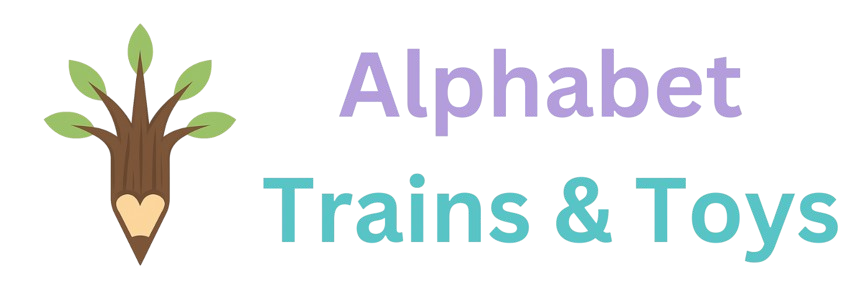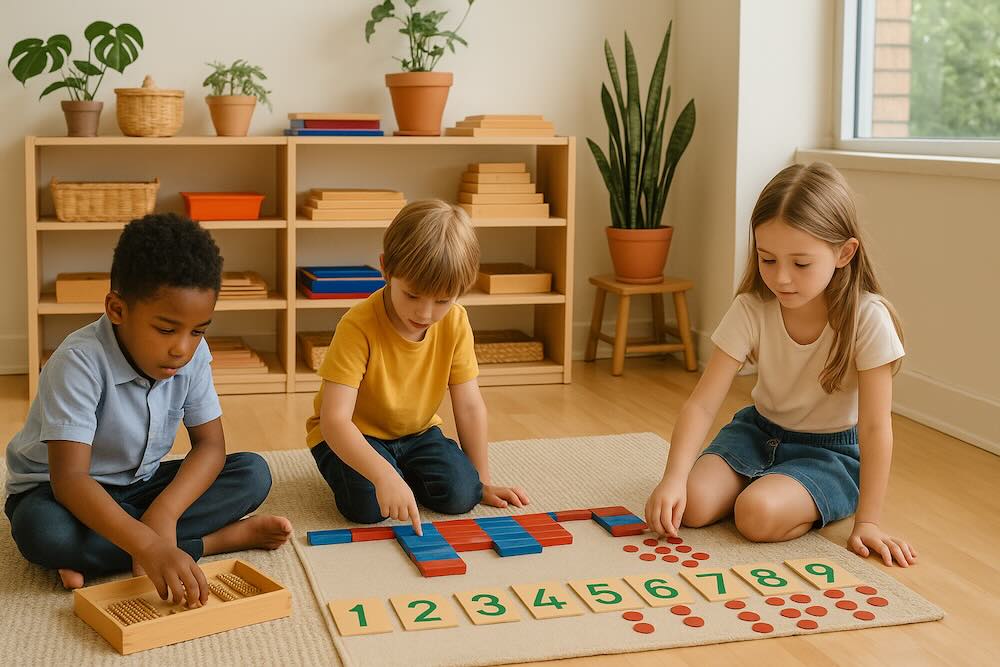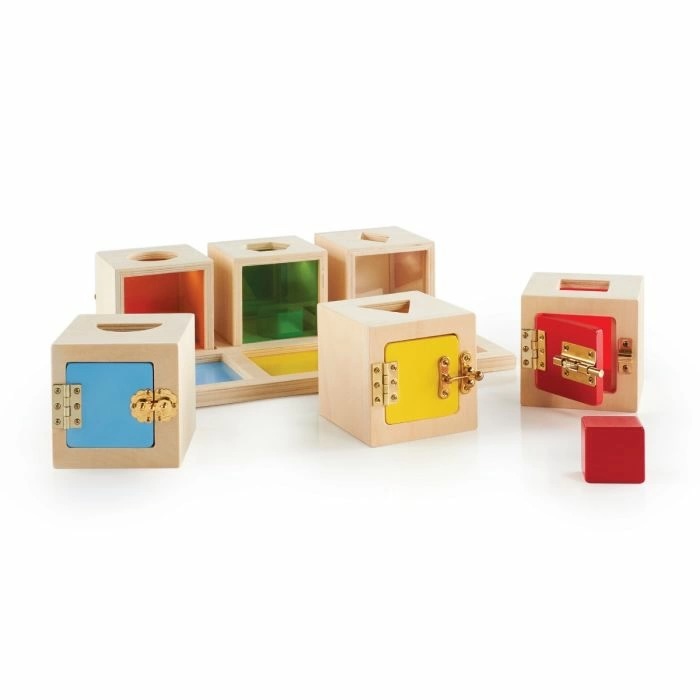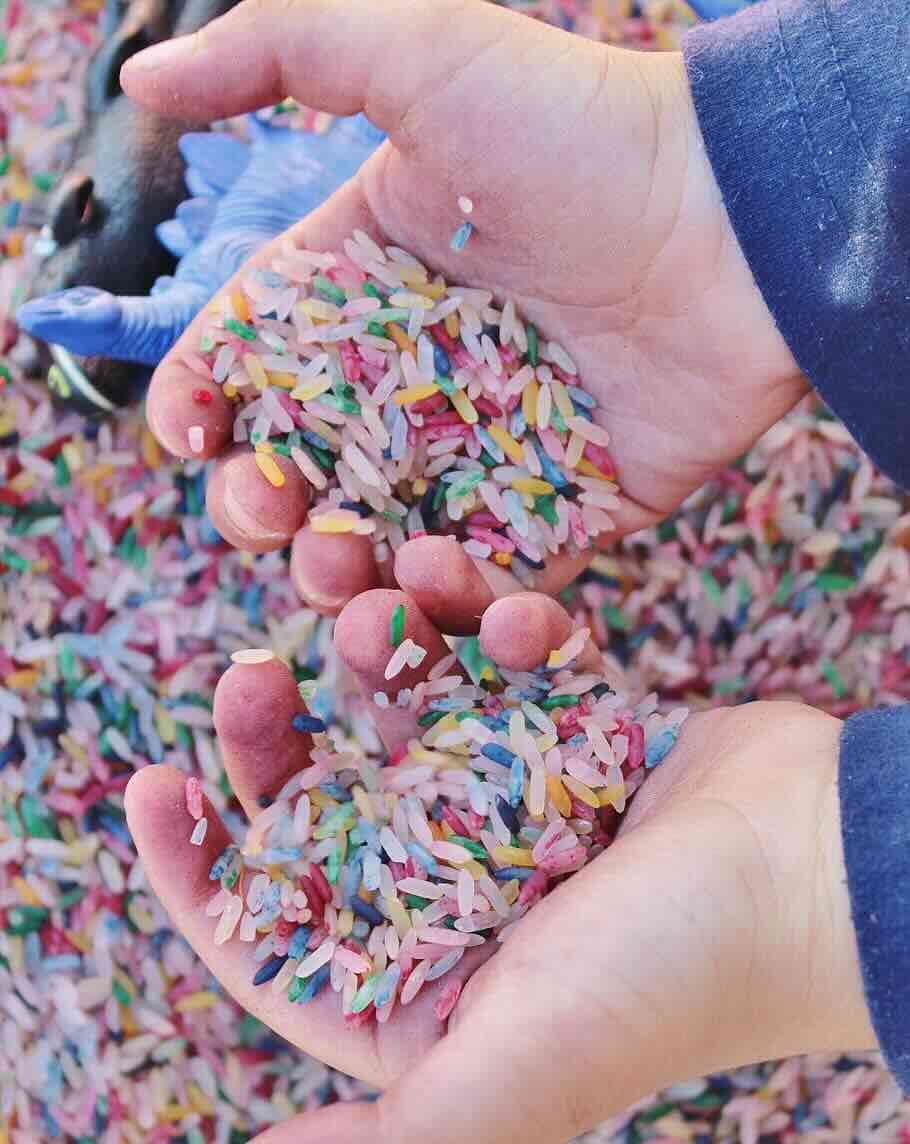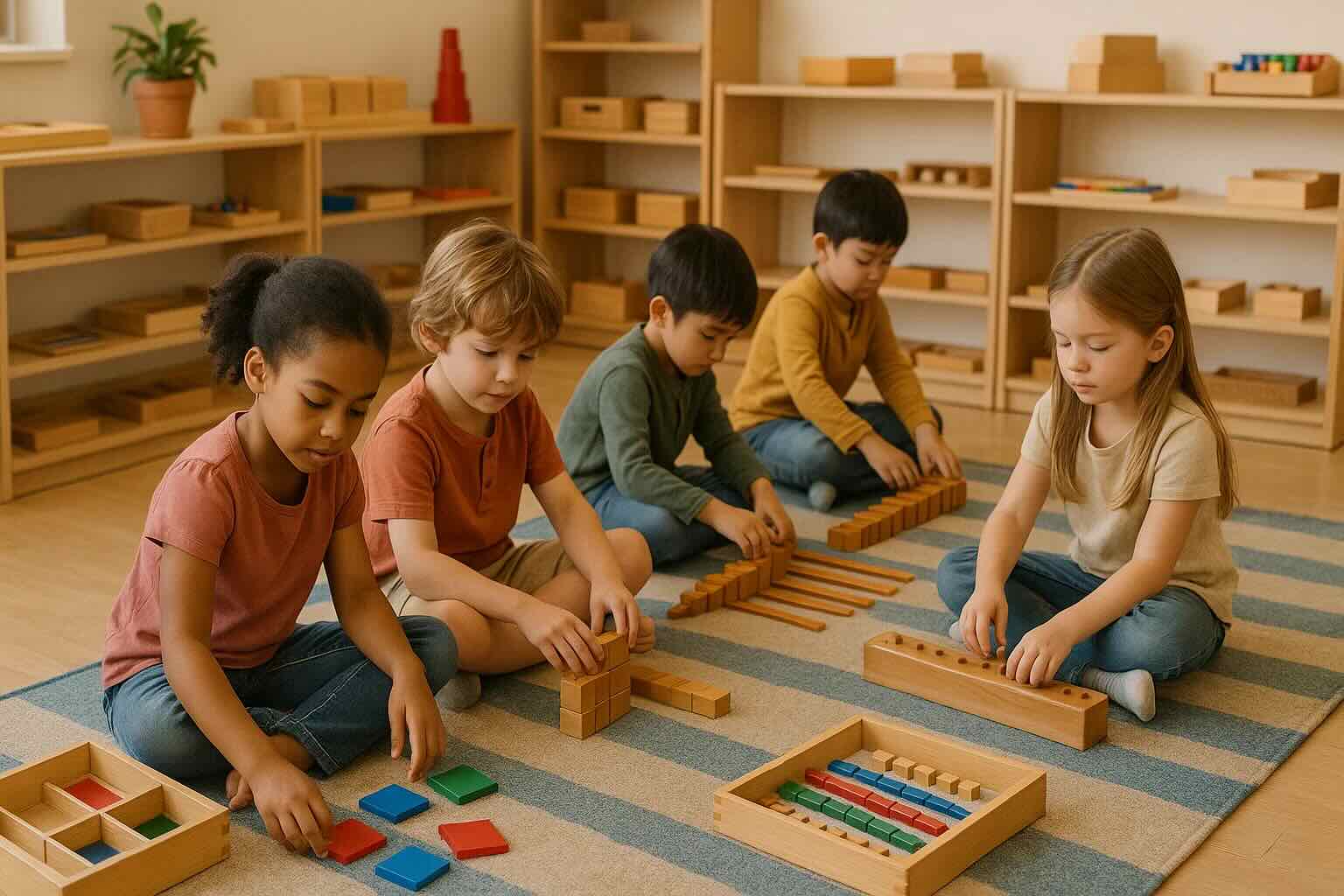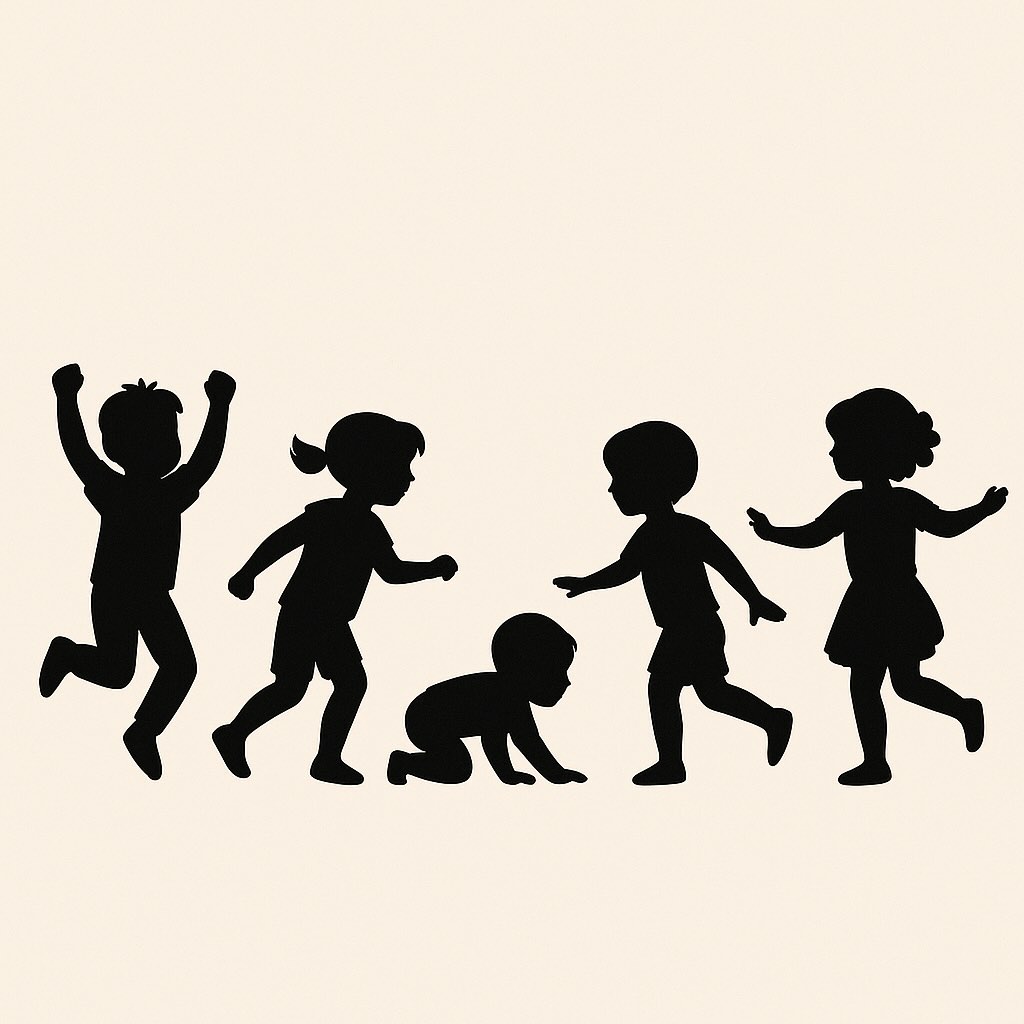Raised by parents with limited education, I entered first grade behind my peers and spent years catching up. That's why I understand the power of early learning. In Montessori Math, those "aha" moments-when a child's eyes light up-happen often. Through sensorial, hands-on experiences, children truly grasp math as a language of logic and wonder-not just memorize numbers. With this method math becomes a tangible adventure, paving the way for a solid foundation in early math education. Children need an intuitive grasp of mathematical principles from a young age to become naturals with learning.

The earlier children begin learning the more natural learning new concepts is for them.
Introduction to Montessori Math
Montessori Math was developed by Maria Montessori and is acclaimed for its emphasis on hands-on learning and sensorial education. It introduces children to mathematical concepts using a carefully structured approach combining concrete and abstract learning stages. It ensures that your child not only performs mathematical operations but understands the underlying concepts through manipulative and real-life applications. It is important for children to understand why a concept works not simply that it works. Learn more about the official Montessori math framework explained by AMS.
⚙️ Try narrating math aloud in everyday life: "I'm pouring 2 cups of flour," or "We need 3 more spoons." This builds number awareness through routine conversation.
Understanding the Montessori Method
Maria Montessori's educational philosophy centers around the idea that children learn best through direct experience. This concept involves providing children with physical tools and experiences that make abstract concepts tangible. For instance, using bead chains to visualize numerical relationships allows children to grasp concepts in a way that mere numbers on a page cannot.
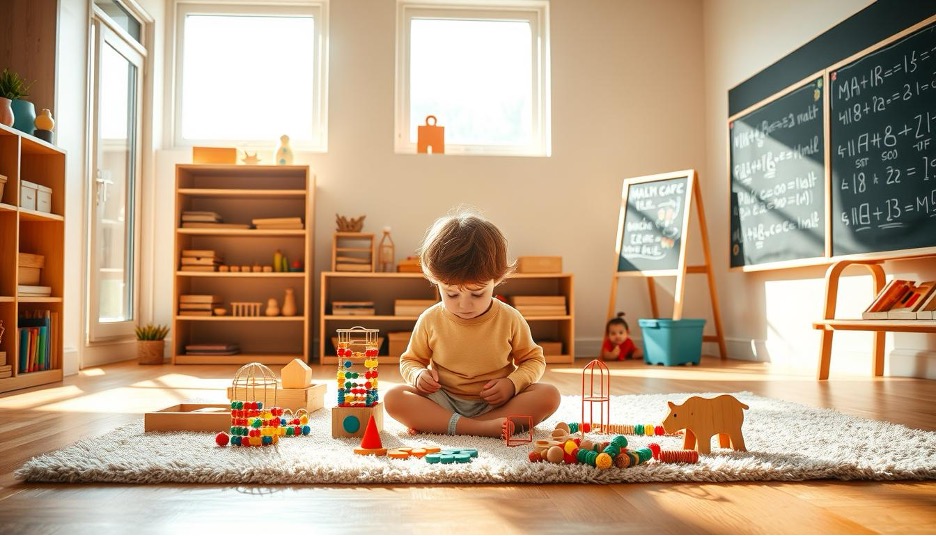
Touching objects and learning their relationships is a more concrete way to help a child understand mathematics.
The Role of Concrete and Abstract Learning in Montessori Curriculum
Integrating hands-on learning and sensorial education into your child's early math education nurtures a love of learning and builds lasting comprehension. Concrete learning is essential by engaging in activities that involve touching, seeing, and manipulating objects to understand math concepts. It allows learning to become natural like play. They can move towards more abstract thinking through guided activities to ensure a solid foundation. The use of Montessori math materials, such as golden beads and number rods, exemplifies how hands-on learning fosters a deep understanding of mathematical principles. By the time symbols and equations are introduced, each child already understands the underlying concepts.
In my first-grade classroom, there was a beautiful abacus. It had brightly colored beads and a beautiful wood frame. I do not recall our teacher ever using it to help us understand how numbers were related. It would have been much easier to visualize numbers if that tool had been properly utilized.
Why Montessori Math Is Different
One of the core principles underpinning Montessori Math is its emphasis on individual growth through self-paced learning and hands-on experiences.
In a Montessori Math classroom, hands-on materials play a crucial role in helping children grasp abstract mathematical concepts. These specifically designed materials engage multiple senses. By manipulating objects such as beads, rods, and counters, children can better visualize and understand mathematical relationships and operations.
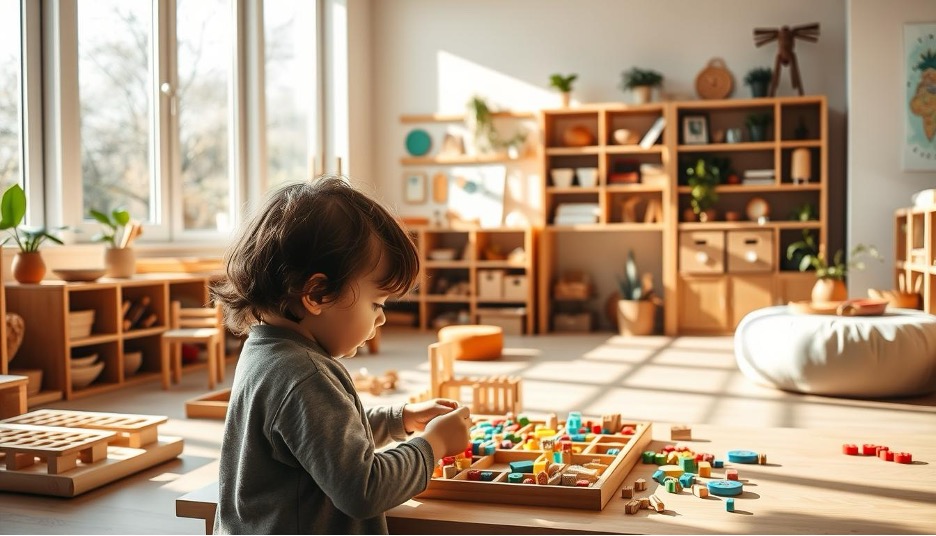
Engaging with learning materials that resemble regular toys, a child can adapt a love of learning at a very early age.
Hands-on engagement fosters a deeper connection to the material and encourages active participation in the learning process. Exploration and discovery are encouraged that allows children to build their understanding through practical application.
Learn more about Montessori Whole School Perspectives.
Learning at Each Child's Pace
The Montessori approach values each child's individuality. In a Montessori Math setting, children are empowered to advance at their own speed, respecting their unique developmental timelines. This learning approach ensures that no child is hurried or held back, promoting a positive and stress-free learning environment. Being raised in a family of four children with a fourteen-year gap between them, we were not given individual attention. When children are grouped together sometimes the individual will suffer if they cannot keep up with the older children.
Child-centered education method means that instruction is tailored to the needs and interests of each child. Teachers act as guides, observing and supporting learners as they progress through the curriculum. They are supported at their level rather than the level of the other children.
🔔 Watch your child play and ask open-ended questions like "How did you figure that out?" or "What do you notice?" This fosters mathematical thinking without pressure.
Key Materials in Montessori Math
The Montessori curriculum is renowned for its unique and effective educational tools such as the Golden Beads, Sandpaper Numerals, and Number Rods. These materials provide tangible ways to grasp abstract math concepts, allowing each child to explore and understand numbers and their relationships.
The Golden Beads are a fundamental part of the Montessori materials. They are used to introduce each child to complex mathematical concepts like place value and the decimal system. With Golden Beads, children can visualize and physically manipulate quantities and their relationships, making abstract ideas more concrete.
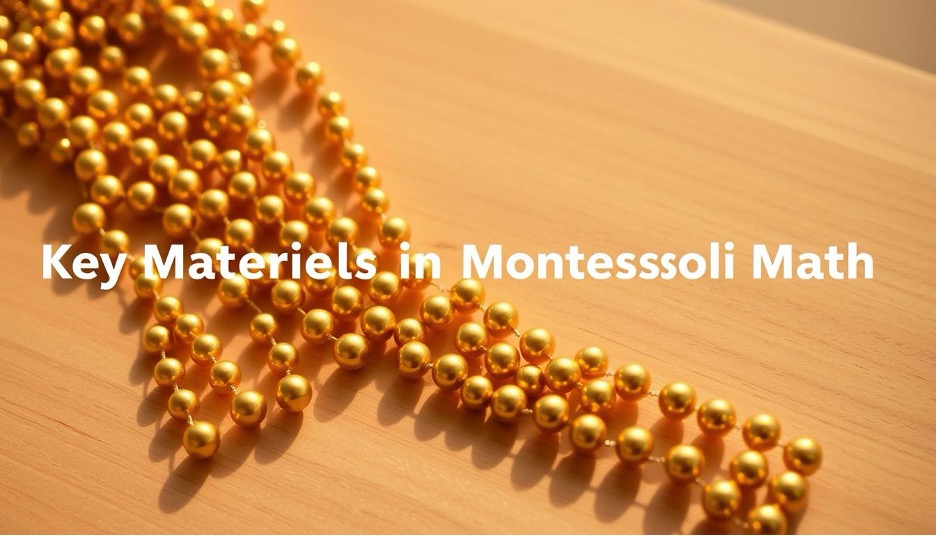
Golden beads are used to help children understand how numbers are related by touching and manipulating the beads.
Sandpaper numerals and number rods are equally essential in the Montessori math curriculum. The tactile nature of sandpaper numerals helps children physically feel the shape of each number, enhancing tactile and kinesthetic learning. Number rods are used to teach sequencing, counting, and basic arithmetic. These tools encourage the development of numerical proficiency in an engaging, interactive way.
🛠️ Rotate math tools weekly instead of offering everything at once. A small basket of 2-3 materials helps children focus and explore concepts more deeply.
Beyond Golden Beads and number rods, other Montessori materials play crucial roles in early mathematical education. Tools like the spindle box, cards and counters, and the Seguin Boards are designed to support numeration and arithmetic operations. Many parents also add Montessori-compatible wooden blocks to support early math exploration through spatial reasoning.
Each of these educational tools contributes to a holistic understanding of math, ensuring your child develops both confidence and competence in this critical subject area.
Montessori Material | Primary Purpose |
Golden Beads | Teach place value and the decimal system |
Sandpaper Numerals | Introduce the shape and form of numbers |
Number Rods | Visualize sequencing and arithmetic operations |
Spindle Box | Help with counting and number recognition |
Cards and Counters | Develop early numeration skills |
Building Number Sense
Building a strong foundation of number sense is a cornerstone of the Montessori math curriculum. Let's explore how these activities and tools can support each child in developing robust mathematical skills.
Numeration is the process of learning about numbers and how they represent quantities. Through hands-on Montessori activities, each child interacts with various tools and exercises that make numeration both engaging and intuitive. These actions are presented almost as play by counting objects, arranging numbers, and identifying quantities. These activities are used to build a solid base for future mathematical understanding.
The Spindle Box is a classic Montessori tool that aids in teaching the concept of zero and reinforces number sense. By placing the correct number of spindles in each compartment, a child learns to physically represent quantities and understand their relationships. Another activity involves using cards and counters, where a child connects numbers with corresponding quantities, further solidifying their numeration skills.
The decimal system and understanding place value are integral components of Montessori mathematics. By employing Golden Bead Materials, children can visually explore these concepts. This method bridges the gap between abstract numerical ideas and tangible understanding.
The decimal system is introduced using the Golden Bead Materials which helps children learn the value of units, tens, hundreds, and thousands by physically manipulating beads that represent each value. The visual and tactile nature of this approach makes complex concepts more accessible and relatable.
Place value is fundamental in grasping the decimal system and performing mathematical operations. Montessori mathematics emphasizes the importance of understanding place value early in the process. The Golden Bead Materials aid in this process by allowing children to see and feel the differences in quantity and value.
Montessori Math
The Montessori mathematics curriculum is deeply rooted in the educational philosophy of Maria Montessori. She placed a strong emphasis on self-directed activity, hands-on learning, and collaborative play. This holistic approach empowers children to delve into mathematical concepts at their own pace, fostering both their individual curiosity and overall child development.
Through the Montessori method, children are not rushed through their learning process. They are encouraged to explore and master mathematical operations comprehensively nurturing confidence and independence. These are key components in their overall growth.
The structure of the Montessori mathematics curriculum aligns with core values that promote natural development and intrinsic motivation. Parents and educators alike are empowered to support this developmental journey by creating environments that are enriched with purposeful and thoughtfully designed mathematical materials.
Teaching Arithmetic Operations
In the Montessori method, arithmetic operations are introduced in an engaging, active manner. Utilizing beads and bars, children gain practical experience, visualizing and concretely understanding operations like addition, subtraction, multiplication, and division. Montessori teaching encourages tactile learning aids in both comprehension and retention.
Montessori approach incorporates beads and bars to practice addition and subtraction. Children manipulate these materials to visually see how numbers combine or separate:
- Addition involves combining beads or bars into a larger whole.
- Subtraction is visualized by removing several beads from a group.
With Montessori teaching, multiplication and division are simplified through interactive techniques:
- For multiplication, beads are grouped to show repeated addition.
- Division is visualized by distributing beads evenly among a set number of groups, aiding in understanding fair shares and equal parts.
✍️ Use sidewalk chalk to draw out addition or subtraction stories. Children can walk the problems with their feet to see math unfold physically.
This active approach ensures that each child can grasp these fundamental arithmetic operations firmly before moving on to abstract representations designed to help them gain confidence.
Transitioning from Concrete to Abstract
The transition from concrete learning to abstract concepts in Montessori Math is a carefully staged process. During this Montessori transition, educators ensure that children have thoroughly mastered tangible concepts before moving further. Traditional classrooms and home teaching practices often miss making sure each child understands at each level. This can cause confusion for the child later in their learning process.
Introducing abstract concepts in Montessori education requires precision and timing. Teachers observe each child's readiness and understanding of concrete learning materials. Only when a solid foundation is established do they gradually shift to abstract notions.
This progression guarantees that children are not overwhelmed and that their educational journey is cohesive and effective. By securely anchoring knowledge, children can confidently transition to more advanced abstract concepts, paving the way for continual educational progression.
💼 If your child gets stuck, pause instead of correcting. Quiet observation lets you see how they think - and shows them you trust their process.
Understanding the principles behind linear counting and skip counting is essential in the Montessori math curriculum. These techniques help each child grasp the concept of numerical sequences and patterns needed to build a solid foundation for advanced mathematical operations. Let's explore the tools that make this learning experience effective and engaging.
The short and long bead chains are vibrant and practical tools that facilitate linear counting and skip counting. Your child will use these bead chains to visualize sequences of numbers and understand the relation between them. This method turns counting into a more interactive and visually appealing practice. Short bead chains are used for smaller number sequences, while long bead chains handle more extensive counting sequences, supporting both individual and group learning.
The 100 Board is a classic Montessori tool that enhances counting practice. By placing numbered tiles onto the board, children practice linear counting to 100 and recognize patterns and sequences. Engaging with this board helps to solidify their comprehension of number sequences, making the transition to more complex mathematical concepts smoother.
Advanced Montessori Math: Fractions and Beyond
As children make strides in their Montessori advanced curriculum, they encounter more intricate aspects of advanced math. One such crucial area is fractions, where learners gain their first formal introduction to dividing wholes into equal parts. Key to this learning process is the use of Fraction Circles, enabling them to grasp fractions in a tangible and effective manner. In my experience many children do not understand that fractions are simple division problems. Until they can understand how fractions relate to objects they cannot visualize and move on to more complicated equations.
The journey into fractions begins with the intriguing Circle Material. These tools enable students to visualize and manipulate different fraction parts, helping them to understand concepts like halves, thirds, and quarters through practical activities. By using these physical representations, children can better comprehend the numerical value and real-world applications of fractions.
Montessori advanced curriculum supports continuous mathematical development beyond the elementary fraction concepts. As students' understanding deepens, they are introduced to more complex fraction operations. Educators then encourage them to apply their knowledge to solve real-world problems. The commitment to hands-on learning ensures that these concepts are not merely theoretical but become part of their practical skillset. Many children grow up hating the concept of ‘word problems' in math because they never realize this is how math will be used later in life. Rather than being presented as ‘word problems' creating a puzzle like concept helps engage their natural curiosity and abilities.
To highlight key advanced materials and activities in advanced math and fractions, here's a table of essential resources and their benefits:
Material | Benefit |
Fraction Circles | Visual and tactile introduction to fractions. |
Fraction Inserts | Advanced understanding of divided wholes. |
Decimal Board | Bridges fractions and decimals for holistic learning. |
Equivalent Fraction Materials | Assists in understanding fraction equivalence and comparison. |
Mathematical Operations with Fractions | Real-world application and problem-solving. |
Montessori Math in the Home Environment
Integrating Montessori Math into home education can provide a rich and engaging learning experience for your child. Establishing a conducive learning environment at home supports their educational journey and fosters a love for math. Here's how you can create a Montessori-inspired math space and support your child's learning journey. Explore our collection of Montessori-aligned toys for home learning to reinforce key math concepts through play
Creating a Montessori-Inspired Home Math Space
A dedicated math space tailored to the Montessori method is key to successful home education. This includes:
- Shelves at a child-friendly height: Allowing your child to access materials independently.
- Organized materials: Use trays and baskets to keep math tools tidy and inviting.
- Variety of tactile materials: golden beads, sandpaper numerals, and number rods to stimulate learning.
Supporting Your Child's Learning Journey
Providing the right learning environment and being actively involved in your child's educational pursuits can make a significant difference. Here are some ways to support learning:
- Observe and guide: Watch how your child interacts with materials and gently guide them as needed.
- Encourage exploration: Let your child explore math concepts at their own pace, reinforcing their understanding.
- Celebrate progress: Acknowledge and celebrate your child's milestones, fostering their confidence and enthusiasm.
⏰️ Build quiet, predictable math time into your routine. Even 10 minutes a day of focused number play can support deep, consistent learning over time.
By setting up a dedicated space and being actively involved, you create a nurturing environment that supports your child's growth and love for math, making Montessori at home a truly rewarding experience.
Looking for free printables to support Montessori math at home? Download our Montessori Habitat Matching Worksheet - a hands-on resource for ages 3–4.
Montessori Math in the Classroom
Within a Montessori classroom and Montessori school, various subjects integrate seamlessly to create universal and enriching learning experiences. Mathematics, often perceived as an isolated discipline, finds natural connections with language, science, and arts. This approach not merely enhances academic understanding but also fosters a deeply rooted appreciation for learning in children.
Integrating Math with Other Curriculum Areas
The Montessori method promotes classroom integration by connecting math lessons and concepts with real-world applications across different subjects. For instance, while learning about measurements in math, children might explore this concept through practical life activities like cooking or gardening. This interdisciplinary curriculum development enhances each child's grasp on mathematical concepts and aids their journey within an educational environment.
The Importance of a Prepared Environment
A well-prepared Montessori classroom is essential for effective learning. Even tools like Montessori mirrors help foster independence and concentration-essential qualities for math learning.
These environments are meticulously designed to encourage independence and curiosity. Materials are carefully chosen and arranged to be accessible to children, promoting self-directed exploration. The nurturing educational environment ensures that children can absorb and understand complex mathematical concepts organically as they engage in daily activities.
Wrap Up
The Montessori Math curriculum is a powerful tool for nurturing a child's mathematical understanding and fostering a lifelong love for learning. By integrating hands-on materials and a methodical approach, Montessori education ensures children grasp essential concepts at their own pace, leading to deep, meaningful emotional outcomes. This approach builds strong numeracy skills and enhances critical thinking and problem-solving abilities needed all through life.
We have explored the unique components of Montessori Math-from the use of concrete materials to the seamless transition to abstract thinking. The emphasis on individualized learning and the holistic integration of math into other areas of the curriculum strengthen a child's overall development and readiness for future educational success.
The Montessori Math curriculum equips children with more than just mathematical skills: it instills a passion for learning, independence, and confidence that serves them throughout their lives. By creating a supportive environment both at home and in the classroom, parents and educators can ensure that children are well-prepared for lifelong learning and real-world success.
If you're new to the method, here's our complete guide to Montessori education to explore how it applies across subjects.
FAQ
What is the Montessori Method?
The Montessori Method is an educational approach developed by Dr. Maria Montessori that emphasizes child-led learning, hands-on activities, and a prepared environment to facilitate independent discovery and growth.
How does Montessori Math differ from traditional math teaching?
Montessori Math focuses on concrete learning with hands-on materials, allowing children to physically manipulate objects to understand mathematical concepts before moving to abstract reasoning.
What are the key Montessori Math materials?
Key materials include the Golden Bead Material, Sandpaper Numerals, Number Rods, Colored Bead Bars, and the Spindle Box, all designed to make abstract math concepts tangible for young learners.
How do concrete and abstract learning play a role in Montessori Math?
Montessori Math stresses the importance of beginning with concrete materials that children can touch and manipulate, gradually transitioning to abstract concepts as their understanding deepens.
What is the importance of hands-on learning in Montessori Math?
Hands-on learning allows children to internalize math concepts through physical interaction, making abstract ideas more relatable and understandable, fostering deeper comprehension.
Why is learning at each child's pace crucial in Montessori Math?
Montessori Math respects individual learning speeds, ensuring each child grasps foundational concepts thoroughly before moving on, which cultivates a strong, confident mathematical foundation.
How do numeral activities build number sense in Montessori students?
Numeral activities like the Spindle Box and Cards and Counters help children understand numeration, counting, and the relationship between numbers and quantities, enhancing their number sense.
How is the decimal system introduced in Montessori Math?
The Golden Bead Material introduces the decimal system by allowing children to handle units, tens, hundreds, and thousands, helping them understand place value and the structure of the number system.
What techniques are used for teaching addition and subtraction in Montessori Math?
Techniques include using Colored Bead Bars and Golden Beads to visually and physically represent addition and subtraction, helping children understand these operations deeply and intuitively.
How are multiplication and division taught in Montessori Math?
Montessori Math uses tools like the Stamp Game and Bead Bars to break down multiplication and division into manageable, hands-on activities, allowing children to see and understand how these operations work.
When should abstract math concepts be introduced in Montessori Math?
Abstract concepts should be introduced once a child has a solid grasp of concrete materials and the foundational principles, ensuring they are ready to move from tangible examples to abstract reasoning.
How do the Short and Long Bead Chains aid in counting practice?
The Short and Long Bead Chains help children practice linear counting and skip counting, reinforcing their understanding of number sequencing and multiplication tables.
How are fractions introduced in Montessori Math?
Fractions are introduced using Circle Material, which allows children to see how shapes can be divided into equal parts, providing a visual and tactile way to comprehend fractions.
📉 Start with real-life fraction play — cutting fruit, folding paper, or pouring liquids. Once your child is curious, introduce hands-on tools that isolate each concept clearly.
Explore Our Starter Fraction SquaresHow can Montessori Math be incorporated into the home environment?
Parents can create a Montessori-inspired math space at home with essential materials and activities, supporting their child's learning journey through a prepared, engaging environment.
How can Montessori Math be integrated with other curriculum areas?
Montessori Math can be seamlessly integrated with subjects like science, geography, and practical life activities, creating a holistic educational experience that connects mathematical concepts with the real world.
